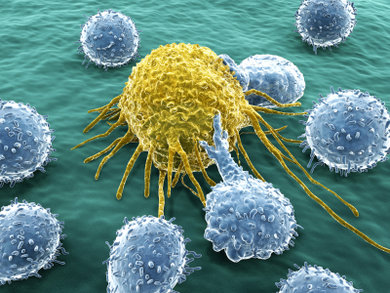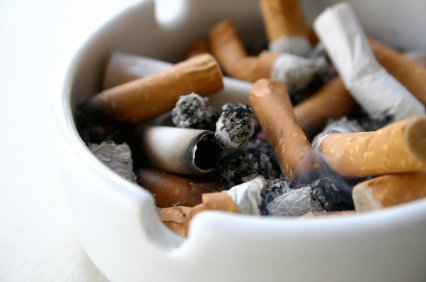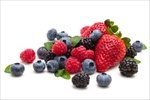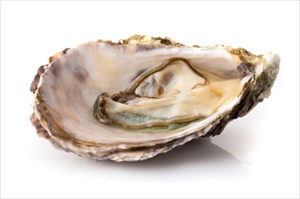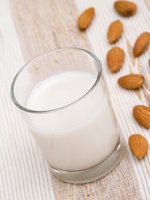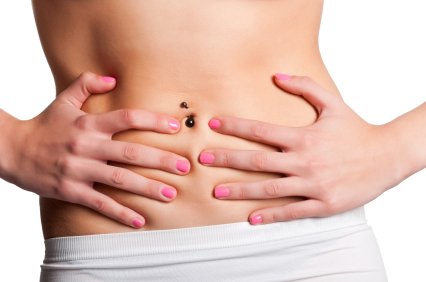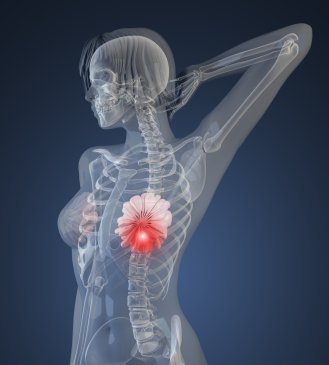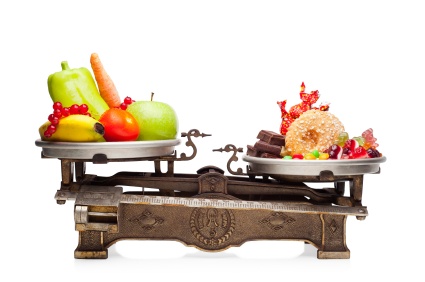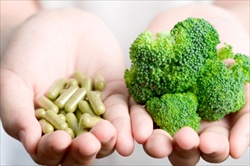Breast Cancer Diet – Clean Waters - Dietary and Lifestyle Strategies to Avoid Submersion in a Sea of Estrogen
Why a Breast Cancer Diet and Lifestyle Approach may prove effective in prevention and improving survival
The breast cancer stats in the West are sobering and point to the importance of implementing the right diet now to decrease your risk for getting the disease and increase your chances of survival, should you get it.
|
Cancer Fighting |
Cancer Nutrition |
Breast Cancer |
Lung Cancer |
Inflammation |
Antioxidants |
|
Vitamin C |
Zinc |
Calcium |
Vitamin D |
Magnesium |
Constipation |
When thinking about whether a diet for breast cancer is worth the effort, start with the facts…
- Breast cancer is the top cancer killer among women of all races in the United States. Second to non-melanoma skin cancer, it is the most prevalent cancer among US women.
- In 2009, the last year for which stats are available, the Center for Disease Control (CDC) reported that 211,731 women were diagnosed with breast cancer; 40,676 died from the disease. The American Cancer Society estimates for 2013 that one in eight (12%) women in the United States will get breast cancer in their lifetime.
- Only 5 to 10 % of breast cancers are thought to stem from genetic defects such as the BRCA1, BRCA2 and other gene mutations. In fact, a whopping 85% of women who get breast cancer do not have a family history of the disease.
- We have much higher rates of breast cancer in the West than in Japan and the developing world. When Japanese women move to the US, within a generation, their breast cancer rates rival those of their American counterparts.
Together, the above suggests that diet, environment and lifestyle are key factors behind the breast cancer epidemic in the West and may hold the answers for prevention and survival.
| Breast Cancer Diet Stats 80% of women with breast cancer have no family member with the disease, suggesting the majority of breast cancers are not caused by genetics but by lifestyle and environmental factors including diet. This is why a breast cancer diet is worth considering for prevention and management of the disease. |
Breast Cancer Diet – What the research suggests about the causes of Breast Cancer
The research suggests … and there are oodles of scientific studies on breast cancer, as anyone who has read any news service in the last twenty years is aware …. one of the key factors in a woman’s risk for breast cancer is an excess of estrogen whether from diet, the meds she consumes, environmental exposure or lifestyle factors including when and how many kids she has and whether she breast feeds or not.
| Breast Cancer Diet – What are hormones? Hormones are powerful chemicals produced in one part of the body that have an effect in another part, traveling via the blood stream. The body produces hundreds of hormones which are essential for many functions including reproduction, sex drive, sleep, metabolism, stress and illness, tissue and bone growth, as well as triggering release of other hormones. Simply put… without hormones you’d die. The network of hormone producing glands is known as the endocrine system. Hormone producing glands include the adrenals; pituitary; pancreas; pineal glands; thyroid; parathyroid glands; and the ovaries in women and testes in men. |
Breast Cancer Diet – The Estrogen Role in Breast Cancer Not a Reason to Despair
Hearing that estrogen - the predominant female sex hormone which all women produce in spades during their reproductive life - may be a primer for one of the biggest cancer killers, might make even the feint hearted despair.
Don’t!
As in many health detective stories, identifying the cause or contributing factors to a disease, lie the answers to its prevention and possible cure.
This is the case with breast cancer and why following a breast cancer diet, sooner rather than later, is a prudent idea to lower your risk. While best to start consuming a breast cancer diet before you are diagnosed; should you get breast cancer, the right food can help and compliment the medical therapy your doctor recommends.
The research confirms this.
Remember, there is never a downside to eating a healthy balanced diet that normalizes hormones and improves detoxification. You will reap many emotional and physical, not to forget, aesthetic benefits from good food, aside from increasing your odds to prevent and fight disease.
Of course, should you be diagnosed with breast cancer, always confer with your doctor to ensure any specific dietary changes won’t compromise your treatment.
For more information about how some foods and nutrients can mimic the effects of common pharmaceutical cancer therapies, press on Cancer and Nutrition.
Breast Cancer Diet Basics – Fundamentals of Cancer
As outlined in Cancer and Nutrition a cancer needs two things to develop. The same process occurs in breast cancer.
- Damage to a cell’s DNA that causes it to divide abnormally and not respond to signals from the immune system to die or stop dividing. Often this initial damage to the cell is caused by free radicals, also known as oxidants. Sometimes innate aberrations in the DNA can promote this damage, like with the BRCA1 and BRCA2 gene mutations; these increase a carriers’ risk for breast cancer, in some cases, 80% over non-BRCA gene mutation carriers.
- An environment which encourages DNA damaged cancer cells to replicate. In the case of breast and other estrogen-driven cancers like ovarian and endometrial cancers, an estrogen-rich environment is the oxygen that can fan the cancer flames. Estrogen provokes these cancer cells to continue to divide, invade and damage adjacent healthy tissue and eventually spread or metastasize to other organs.
… So what to do when devising an effective breast cancer diet?....
If you can eliminate or minimize the above factors, you can minimize your chances of getting breast cancer in the first instance or having it grow and spread in the second. The food you eat and the common household and cosmetic substances to which you expose yourself can play a role in balancing the amount and function of estrogen and other hormones in your body.
To read more about how a cancer cells can remain “in situ” and not grow or spread and how food can affect that process, press on Cancer and Nutrition and Cancer Prevention Diet.
Breast Cancer Diet Basics – Mopping up the Sea of Estrogen for safe swimming
The key to any breast cancer diet and effective strategy for breast cancer prevention is to reduce your intake, exposure and production of estrogen.
Breast Cancer Diet Primer - What is Estrogen?
The majority of breast cancers are estrogen driven AKA estrogen sensitive. The growth of cancerous breast tissue is triggered by and enhanced by estrogen’s presence. There are other cancers that are estrogen sensitive including endometrial/uterine cancer and ovarian cancers, among others.
Cancerous tissue, unlike healthy tissue in adults, consists of cells that replicate uncontrollably. If not stopped, they will spread into neighboring tissue or metastasize to other organs, at the expense of a person’s health and, if not controlled, life. If you have an excess of the active forms of estrogen (and we’ll learn about the different kinds) circulating in your system; your chances increase of existing cancerous cells in your breast replicating.
| Breast Cancer Diet – Hormones - A Complicated Endocrine Interplay The thing to remember with hormones is that they interact with one another, often synergistically in feedback loops: One hormone will suppress the effects of another or, alternatively, trigger the release or production of another. While it has many independent actions in the body, progesterone has been found to combat some of estrogen’s effects. This is why researchers have examined progesterone for its protective role against breast cancer. The same goes for the male sex hormone testosterone (that women also produce, if in smaller amounts), which can have an anti-estrogenic effect. Melatonin, the hormone produced when one sleeps, has been found to enhance production of progesterone, whereas excess cortisol the stress hormone generated by the adrenals has been found to suppress progesterone. Insulin produced by the pancreas can stimulate production of testosterone – a potential problem when insulin levels remain high like with PCOS, insulin resistance and diabetes … This gives an idea of the complicated interplay among hormones, many of which scientists are still discovering. . |
Breast Cancer Diet Facts - Risk Factors for Breast Cancer – Surveying that Sea of Estrogen Surrounding us
The following are key risk factors for breast cancer. Most directly or indirectly relate to a woman’s lifetime exposure to estrogen:
- Being a woman - While men can get breast cancer, it’s 100 times more common in women. The Estrogen Factor: While men produce estrogen, women produce considerably more. It’s the key female sex hormone needed for preparing the endometrium for a fetus, among other purposes. It is implicated in strong bones and a healthy heart. In essence, its effect is pervasive.
- Aging – Getting older increases your breast cancer risk as well as the risk of severity. 66% of invasive breast cancers are in women 55 and over. The Estrogen Factor: At menopause women no longer produce progesterone, the anti-estrogenic hormone, except in infinitesimal amounts; by contrast, they continue to produce small but significant amounts of estrogen, in body fat. Without the inhibiting effects of progesterone, which levels fall precipitously in the few years prior to menopause, the unopposed estrogen (even the small amount produced by fat) has a greater effect than, if adequate progesterone were present. With age and a life time of bad habits and exposure to toxins, liver function can deteriorate and compromise your ability to eliminate toxins including pharmaceutical, alcohol and old hormones, including old estrogens, from your body.
- Some but not all breast conditions - While fibroids and most cysts are not a risk factor for breast cancer, atypical ductal and lobular hyperplasia, which involves an overgrowth of abnormal if benign cells in breast tissue, can increase a woman’s breast cancer risk. The Estrogen Factor: Women who follow a breast cancer diet and reduce their overall exposure to estrogen statistically show improved hyperplasia symptoms. This suggests a connection between estrogen and breast hyperplasia.
- Early age of first period along with late onset of menopause – Women who started their period before age 12 and whose menopause began age 55 and over. The Estrogen Factor: While women produce estrogen from fat deposits after menopause, they produce the greatest volume of estrogen during childbearing years. It follows, the longer her reproductive life, the greater a woman’s risk of breast cancer.
- No kids or having your first child after age 30 – Not having children, or having your first after age 30 increases your breast cancer risk - miscarriages don’t count towards the tally. The Estrogen Factor: During pregnancy, a woman’s levels of progesterone increase and remain high; progesterone inhibits estrogen’s effects. It follows that the more full term progesterone-rich pregnancies a woman experiences, the less the effect of estrogen during these periods.
- Not Breastfeeding – Said to lower breast cancer risk somewhat, especially when continued for 1 ½ to 2 years. The Estrogen Factor: Research suggests that breastfeeding decreases a woman’s estrogen production.
- Birth control pills - especially as teenager. While oral contraceptives raise the risk of breast cancer slightly in adult women, the risk is eliminated 10 years after stopping; for those taken depot medroxyroprogesterone acetate (DMPA; Depo Provera) an injectable birth control progesterone given every 3 months, the risk is eliminated 5 years after stopping. The Estrogen Factor: Some birth control pills are estrogen dominant, which increases a woman’s estrogen exposure. Others contain mainly progestin, a synthetic version of progesterone. Unfortunately, it’s thought that synthetic progesterone does not have the same estrogen-countering effects as bio identical progesterone. It follows, that progestin-combo or progestin-only birth control pills don’t have the same anti-estrogenic effect as natural or bio-identical progesterone.
- HRT – The Women’s Health Initiative confirmed in 2000 on a large scale that HRT routinely prescribed women to help menopause symptoms, increased women’s risk of getting breast cancer substantially as well as their risk of death from it. The drop in breast cancer rates since 2000, including a 7% drop in 2002-2003 alone, is attributable in large part to fewer women on HRT in light of this study. The Estrogen Factor: Taking supplemental synthetic estrogen and synthetic progesterone can increase a woman’s estrogen stores.
| Breast Cancer Diet – Why Caution is Needed when Supplementing Hormones Because hormones have such powerful effect in the body and on each other, caution is required when supplementing any hormone whether it’s a natural form (chemically bio identical to the hormone produced by the body) or synthetic type (molecularly different, if marginally, from what the body produces – the case with some estrogens and progestins in HRT and birth control pills). There may be unexpected effects as with HRT (generally a combination of synthetic estrogens and progesterones (progestin) prescribed for many women to help with menopausal symptoms). Several major epidemiological studies showed HRT increased substantially the incidence of breast cancer and other health conditions. As well, if care is not taken, supplemental hormones can suppress the body’s natural hormone production – the potential case when taking growth hormone (HGH) and cortisol. Luckily, these concerns generally don’t exist when balancing hormones via diet as the effect of food is gradual and cumulative when achieved via health-giving nutrients from food. |
- Overweight – Excess weight, especially in the abdomen is associated with a higher risk of breast cancer. As well as producing estrogen, body fat is the repository of many toxins including pesticides and the like that can damage cellular DNA possibly causing cancer. The Estrogen Factor: Body fat especially that around the middle produces estrogen, a concern especially around menopause when progesterone levels plummet. It follows that overweight or obese women generally have higher levels of circulating estrogens than normal weight women and higher breast cancer risk.
- High Alcohol intake – More than a glass a day raises one's risk by 1 ½ times over women who are teetotal. One glass per day raises the risk minimally. The Estrogen Factor: Alcohol raises estrogen levels. Research has found raised blood estrogen levels in women after consuming one glass. As well excess alcohol is liver toxic, overloading the liver’s clearing pathways, which are the same that eliminate used estrogens. Hence a lot of alcohol can lead to excess estrogen levels.
- Exposure to radiation especially chest X-rays as well as transatlantic air travel – This can produce DNA damage and provoke cancerous changes in exposed tissue.
- Dairy and meat, especially high fat and well-cooked varieties – are associated with a higher risk of breast cancer. Well cooked meat has been found to contain a carcinogenic substance linked to increased cancer risk. The Estrogen Factor: Diary contains both natural hormones for the growing calf as well as synthetic growth hormones designed to increase milk yields. Meat and dairy, unlike most unprocessed plant foods, lack fiber so the higher proportion of your calories from animal products, the less fiber you’ll consume. Fiber is key for good elimination of old estrogens to ensure they aren’t reabsorbed.
- Highly refined foods including added sugars – High glycemic foods like white flour and rice and refined sugars including high fructose corn syrup spike insulin levels, which in turn, promote release of insulin like growth factor (IGF). IGF promotes cell replication and inflammation, two factors that promote cancer growth. The Estrogen Factor: High blood insulin levels provoke testosterone production, which can trigger polycystic ovarian syndrome (PCOS). This condition prevents a woman from ovulating and, therefore, from producing progesterone. As well, fluctuating blood sugar levels resulting from excess insulin promote secretion of cortisol, the stress hormone. Cortisol, in turn, suppresses progesterone production, which leaves estrogen uninhibited.
- Diet low in fiber – Fiber rich plant foods including whole grains, legumes, fruits and vegetables can help regulate blood sugar levels, and discourage release of excess insulin and especially cancer and inflammation promoting IGF (See above). -The Estrogen Factor: Lack of fiber can slow elimination of old hormones including estrogen that will be reabsorbed in the digestive tract and can lead to excess hormone levels
- Poor sleep and shift work – is associated with higher breast cancer risk thought to be related to reduced melatonin levels caused by disturbed or insufficient sleep. The Estrogen Factor: Scientists say that melatonin promotes good sleep, which, in turn, can counter excess estrogen levels.
- Smoking and exposure to second hand smoke – especially long term heavy smoking is associated with an increased risk of breast cancer. The Estrogen Factor: Along with the carcinogenic aspects of cigarette smoke which damage DNA, cigarette toxins increase the load on the liver and compromise detoxification of old hormones including estrogen.
- Lack of physical activity – exercising as little as 1 ¼ to 2 ½ hours per week can lower breast cancer risk by up to 18% and decrease risk of recurrence.
- Stress - can promote the release of cortisol from the adrenal glands. The Estrogen Factor: Cortisol suppresses the action of progesterone which, in turn, can lead to an overabundance of estrogen.
| Breast Cancer Diet Facts – The Multiple Faces of Estrogen Estrogen is a group of hormones comprising more than 25 varieties. The main types generated in the body are E1 estrone, E2 estradiol; and E3 estriol. In young adult women, these normally co-exist in a ratio or 15:15:70. The first two estrogens – estrone and estradiol -encourage the growth of breast cancer and other estrogen sensitive cancers; the last – estriol - is seen as beneficial and possibly cancer protective because it is less biologically active than the other two. Because they all latch onto the same estrogen receptors in the body, it makes sense to have the most benign estrogens getting a seat at the table, to prevent the damaging estrogens joining the party . |
Breast Cancer Diet –What is the Goal of Any Breast Cancer Diet?
As a rule, the greater a woman’s lifetime estrogen exposure; the greater a woman’s chances of breast cancer.
Because of this, any breast cancer diet must achieve two goals;
- Lower a woman’s overall estrogen load;
- Ensure that excess estrogen and toxins are eliminated from the body.
Luckily, diet and lifestyle practices in your home and kitchen are effective places to start reducing estrogen intake and exposure and begin balancing your hormones. We’ll look at reducing estrogen production and exposure first.
Next we’ll look at improving your liver’s detoxification capacity both for old hormones and toxins generally – the second part of an effective breast cancer diet.
Breast Cancer Diet - The basics of the Breast Cancer Diet
In light of the above risk factors for breast cancer, below are some dietary and lifestyle strategies to balance your hormones and reduce your overall chances of breast cancer for you and your daughter.
The Breast Cancer Diet Basics
- Maintain a healthy weight – Avoid excess body fat. Adipose (fat) tissue produces estrogen independently of the ovaries. As well, excess body fat is a repository of toxins and old hormones that can damage DNA.
- Avoid HRT – First try dietary and lifestyle measures to reduce menopausal symptoms, including weight bearing exercise in the case of retaining bone mass, before trying hormone replacement; and consumption of phytoestrogens like soy to diminish hot flashes. Next, explore bio identical progesterone and estrogen therapies with your doctor before exploring synthetic HRT. This is a complicated area but dietary measures can go a long way to reduce menopausal symptoms in some women and avoid or minimize the need for HRT or bio-identical hormone therapy.
- Minimize meat and dairy – in order to reduce saturated fat intake. Source organic and grass fed products, as opposed to the conventional commercially raised kinds, to ensure no added hormones or pharmaceuticals but a healthier Omega 3; Omega 6 profile. A healthy Omega 3; Omega 6 ratio can render the meat and dairy less inflammatory – a good thing when it comes to cancer. When preparing meat, avoid well done meat or high heat cooking methods like grilling and broiling, to minimize intake of carcinogenic nitrosamines. The same goes for cured and smoked meats prepared with cancer causing nitrates.
- Maintain a high fiber intake by eating whole grains and legumes as well as plenty of fruits and vegetables – this ensures that old hormones are evacuated efficiently from the body and do not recirculate.
- Avoid excess added sugar and other refined high glycemic foods – they play havoc with your insulin levels and stress hormones. The former provokes IGF secretion that can promote cancer cell growth; the latter can inhibit anti-estrogenic progesterone production.
- Consume phytoestrogens regularly in order to minimize the effects of the more biologically active estrogens. Phytoestrogens include traditional soy products like tofu, tempeh, miso, tamari (soy sauce) and other phytoestrogens like beans and lentils.
- Limit your alcohol – if female, drink no more than one glass a day and give your liver a break each week for a few days from alcohol. Alcohol is liver toxic and a healthy liver is essential for balancing estrogen levels. Consume alcohol with food, because taken alone it can spike blood sugar levels and promote insulin and IGF secretion. Should you drink, stick with resveratrol-rich red wine, which contains therapeutic anti-oxidant properties.
- Limit radiation exposure whether from x-rays, transcontinental air travel or other forms.
- Get regular sound sleep. Avoid shift work if possible so you don’t disrupt melatonin production that can play havoc with your adrenal stress hormones. This in turn can suppress your progesterone production and lead to excess estrogen levels.
- Eat organic food or only those foods grown or raised without added pesticides; hormones; antibiotics and other pharmaceuticals. Remember, whatever is fed to the animals or plants you eat, is fed to you too. Many of the pesticides or hormones given animals or sprayed on crops are xynoestrogenic endocrine disruptors that can increase a person’s overall estrogen load and disrupt healthy hormone balance. Other of these pesticides can damage cellular DNA and are directly neurotoxic or carcinogenic. Collectively these excess hormones, toxins and antibiotics put a strain on the liver that impairs hormone removal.
- Manage Stress and ensure it does not become chronic – Major and chronic unresolved stress can make cortisol levels skyrocket and diminish normal progesterone and melatonin production and function - bad news for minimizing estrogen.
Breast Cancer Diet Strategies– Nutrients to Include As part of your Breast Cancer Diet
While a healthy balanced diet with an emphasis on pesticide-free whole plant foods and organic free-range organic animal products in moderation is essential; consider making the following nutrients part of your breast cancer diet.
- Vitamin D – While the link between Vitamin D and breast cancer incidence is controversial with several studies showing a link and others not; two studies have indicated a connection between inadequate Vitamin D in young girls as well as premenopausal women and a higher future incidence of breast cancer. The Canadian Cancer Association recommends all adults supplement 1000 IU of Vitamin D during the winter months and that adults over 50 or with dark skin or who routinely cover their skin, supplement year round. Even those in sunnier climes may need supplemental vitamin D, due to widespread sun avoidance practices to prevent skin cancer. Press here to read more about the Benefits of Vitamin D and how to get enough via diet and supplements.
- Omega 3s - While low fat diets are linked to decreased incidence of breast cancer, the type of fat matters. Omega 3s and some forms of Omega 6 fats are associated with lower incidence of breast cancer. An excess of saturated and trans fats are linked to higher breast cancer risk, as are an excess of monounsaturated fats; in contrast, Omega 3 oils are considered breast cancer preventative. Press here to read more about the Benefits of Omega 3s and how to incorporate them in your breast cancer diet.
- Soy Foods- Dietary intake of traditional soy foods has been found in repeated studies to lower the risk of breast cancer. See Box about phytoestrogens and why they are important part of a breast cancer diet. Among those who have breast cancer, soy foods and other phytoestrogens decrease the incidence of recurrence. Press on Cancer Prevention Diet, Cancer and Nutrition and Cancer Fighting Diet for more details about different types of soy foods and how to incorporate into your breast cancer diet.
To read more about what foods to include in a breast cancer diet, press on Cancer Foods.
| What are phytoestrogens and why are they important part of a Breast Cancer Diet? As mentioned, phytoestrogens are plant foods with a weak estrogenic effect that can reduce overall estrogen levels in the body by latching onto estrogen receptors and effectively ensuring the more powerful circulating estrogens don’t get a seat on the bus. Phytoestrogens also lower blood levels of estrogen and testosterone, by promoting the liver’s release of SHBG. The most abundant phytoestrogens are soy and its many byproducts including miso, tofu, tempeh, tamari, soy milk and soy yogurt. Other foods contain phytoestrogens, if lesser amounts, including whole wheat bread; lentils; rye bread; brown rice; bean sprouts; chickpeas; red beans; peanuts; and currants. |
Breast Cancer Diet and Lifestyle Strategies – It’s Never too Early to Think about a Breast Cancer Diet - Start you Daughters when young on a Breast Cancer Prevention Diet
The research shows that childhood diet can affect a woman’s risk of breast cancer later in life. Researchers speculate this is because estrogens affect developing breast tissue in particular. It follows that one is never too young to follow a breast cancer diet in order to lower risk of future disease.
- Avoid overweight in young children – girls will menstruate when they achieve a certain percentage of body fat. The rise in childhood obesity is thought to be one reason for the increasingly younger age at which girls in the West begin their periods and, accordingly, the start of estrogen production.
- Minimize your child’ reliance on meat and dairy – instead rely on plant sources of protein liked beans and lentils, which function as phytoestrogens, and can counter the effect of the more powerful estrogen forms. Use hummus and other bean dips. Reduce cheese on pizza and use roasted garlic spread instead. Roasted garlic, like roasted onions, has a smooth sweet flavor that children like. Introduce your child to soy milk and use diary substitutes in cooking.
- If you’re considering the birth control pill for acne or family planning reasons for your teenager, considers alternate non-hormonal means. Even switching to a progesterone only birth control pill may not be sufficient, because the artificial progestin is not bio identical to the progesterone a woman produces naturally. It follows that this artificial progesterone won’t counter the effects of a woman’s estrogen like naturally progesterone.
- Be careful about the products you apply to your child’s skin and scalp – to avoid common xynoestrogens found in makeups and hair products. Avoid parabans and other estrogen-like substances used routinely in sunscreens, skin creams and cosmetics.
- Avoid phthalates made into PVC in your child’s room, bedroom and toys and in the packaging of foods used by your family - due to their possible xynoestrogenic and endocrine disrupting effects.
- Eat organic food, especially animal products high on the food chain – in order to avoid pesticides, antibiotics and added hormones that can disrupt healthy hormone function in your child during a time when breast tissue is rapidly developing.
Health Conditions that Can Dispose you to a higher incidence of Breast Cancer
|
Breast Cancer Diet Strategies – Improving Liver Detoxification – The Key to Balancing Hormones
A successful breast cancer diet, along with reducing exposures to estrogens, will be a liver friendly diet.
When it comes to ridding your body of excess estrogen, it’s essential that your liver detoxification be tip top. Why?
The liver is where old estrogens as well as other used hormones and toxins are processed before being eliminated in feces or urine. If this detoxification processes works properly, old estrogens, most notably the bad kinds (from a breast cancer perspective) E1 and E2 will recirculate in blood contributing to elevated hormone levels.
| How phytoestrogens balance hormones. First, the weaker and more benign phytoestrogen latch onto the body’s estrogen receptors in place of the stronger more biologically active estrogens. Second, phytoestrogens promote the liver’s release of sex hormone-binding globulin (SHBG). Together, these decrease circulating hormones that can promote cancer’s growth in hormone sensitive organs like the breast, ovaries, testes and prostate. |
Breast Cancer Diet Basics - Two Phases of Liver Detoxification and why it’s important that your liver detoxification pathways function well
Because of the liver’s hormone balancing role, any effective breast cancer diet must ensure that the liver is well nourished in order to perform its hormone removal function.
A simple explanation is needed.
In the first phase of liver detoxification, the products of digestion are transformed into metabolites. Some of these intermediary liver byproducts are as dangerous, if not more, than the original product of digestion that arrives in the liver via the blood stream. Oxidizing free radicals are rife at this stage. This is why an abundance of anti-oxidants like Vitamin C, Vitamin E, glutathione, carotenoids, milk thistle (silymarin) and Zinc are beneficial to prevent anti-oxidant damage to the liver. Other key nutrients at this stage are all the B Vitamins including B6 (pyridoxine), folic acid, biotin and inositol.
- An abundance of fruits and vegetables are superb sources of Vitamin C; nuts and seeds are good sources of Vitamin E; many B Vitamins are abundant in whole grains including wheat germ and brewer's yeast; Carotenoids are widespread in colorful fruits and vegetables; and milk thistle or silymarin is available as a supplement in extract form.
The second phase of liver detoxification occurs when these metabolites bind with other molecules in order to be escorted from the body via the kidneys or bowel. Many of these molecules needed for this process are contained in amino acids as well as sulfur containing foods.
- There are many food sources that promote effective second stage liver detoxification including a number of sulfur containing amino acids including glutamine, glycine, taurine and cysteine as well as sulfur containing phytochemicals like those found in (a) cruciform vegetables including broccoli, cabbage, cauliflower, brussel sprouts, arugula ; as well as (b) allium family members including garlic, leaks, shallots and onions. Eggs are good source too. Glutathione is also a necessary for phase 2 liver detoxification process and can be found in dark berries.
This two-step liver detoxification process is a complicated one requiring many different nutrients along the path…. If any one nutrient is deficient, the result can be sluggish or impaired elimination. In the case of breast cancer, this can lead to an excess of old estrogens or DNA damaging toxins circulating in the body that, if liver function were optimal, would have been eliminated.
While it’s important to supply the liver with the nutrients it needs to perform its detox function, another equally important strategy for healthy liver function and effective detoxification is to not overwhelm the liver with toxins or substances that make this essential organ work harder or expend more nutrients than necessary
When you look at substances that can overwhelm the liver detoxification pathways and the risk factors for breast cancer, you see the connection between the two.
Breast Cancer Diet Basics - Substances to Limit for Good Liver Detoxification Function
- added hormones including from HRT as well as synthetic and naturally occurring kinds in meat and dairy
- pharmaceuticals especially liver taxing pharmaceuticals like paracetamol (acetaminophen) and some antibiotics
- alcohol
- excess saturated and trans fats
- pesticides, many of which can be xynoestrogenic as well as directly carcinogenic
- carcinogens like nitrosamines in well done meat , nitrates in cured meats, and byproducts of cigarette smoke.
Many of the above substances and their effect on the liver are dose and health related. Often a person can consume the above substances occasionally or in small amounts without ill effect. However, larger doses or chronic consumption of several liver-taxing substances cumulatively can cause the liver detoxification pathways to falter. This is especially the case when age, inadequate diet or physical or emotional stress is a player.
From the perspective of a breast cancer diet, this can tip the balance and lead to disease or its spread.
So what to do? ….
Breast Cancer Diet – Simple Estrogen Lowering Strategies – A two part approach to make sure your liver can remove old hormones effectively
First - minimize your intake and exposure to estrogenic substances, whether in food or environment, including the chemicals you apply to your skin like shampoos, skin creams and sunscreens many of which contain xynoestrogens.
Second – help eliminate old estrogens from your body – To do this, make sure your liver detoxification capacity is tip top by
- consuming the nutrients your liver needs to function properly;
- avoiding foods and substances that are liver toxic or overload the liver’s detoxification pathways; and
- eating enough fiber so that old estrogens are eliminated efficiently via the intestinal tract and don’t get reabsorbed.
Press on the below links to read more about the Breast Cancer Diet and related health and diet issues....
|
Balanced Diet |
Calories |
Food Labels |
My Plate |
Organic |
Vitamins? |
|
Inflammation |
Antioxidants |
Low Glycemic |
Vitamin C |
Cancer |
Omega 3 |
Press here to read more about cancer and nutrition and how it will impact on an effective breast cancer diet.
Press here to read more about a cancer
prevention diet.
Press here to read more about a cancer fighting diet.
Press here to read more about cancer foods.
Press here to read more about what inflammatory foods you should avoid when you have or seek to prevent cancer.
Press here to read more about the benefits of Omega 3 oils including their anti-cancer and immune-enhancing properties.
Press here to read more about oxidizing free radicals as well as figuring out a food’s anti-oxidant potential using orac values.
Press here to read more about the anti-cancer benefits of vitamin C and the importance of anti-oxidants generally in your diet.
Press here to read more about the benefits of vitamin D and how it can play a part in a breast cancer diet.
Press here to return to Healthy-Diet-Healthy-You home.
